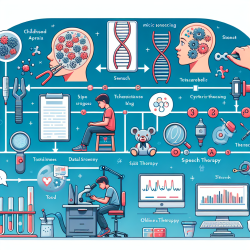Introduction
In the realm of disaster preparedness, the concept of "grab bags" or "emergency kits" has gained significant attention. These kits are designed to provide essential items needed for survival during and after a disaster, ensuring self-sufficiency for at least 72 hours. However, questions remain about their effectiveness and how they are promoted globally. This blog explores insights from the research article "The Promotion of ‘Grab Bags’ as a Disaster Risk Reduction Strategy" and offers guidance on implementing these findings in practice.
Understanding the Research
The study, conducted across Canada, China, England, Japan, and Scotland, highlights the promotion and usage of grab bags as a disaster risk reduction (DRR) strategy. Despite the widespread recommendation of grab bags, the research identifies gaps in empirical evidence regarding their effectiveness. The study emphasizes the need for a standardized approach to grab bag guidelines and suggests further research to strengthen the evidence base.
Key Findings and Recommendations
- Variability in Guidelines: The study found significant variations in grab bag guidelines across different countries. This inconsistency can lead to confusion and reduced effectiveness. Practitioners should advocate for standardized guidelines that are evidence-based and tailored to specific needs.
- Importance of Empirical Evidence: While grab bags are widely promoted, there is a lack of empirical evidence supporting their effectiveness in enhancing disaster resilience. Encouraging further research in this area is crucial to validate their role in disaster preparedness.
- Tailored Messaging: Effective communication strategies are essential for promoting grab bags. Tailoring messages to specific populations, especially those with unique needs, can enhance the uptake of grab bag recommendations.
Implementing Grab Bags in Practice
For practitioners, incorporating grab bags into disaster preparedness plans can be a valuable strategy. Here are some steps to consider:
- Educate and Engage: Use workshops and seminars to educate communities about the importance of grab bags. Engage them in interactive sessions to demonstrate how to assemble these kits effectively.
- Standardize Guidelines: Work with local authorities and organizations to develop standardized grab bag guidelines that are easy to understand and implement.
- Promote Inclusivity: Ensure that grab bag guidelines consider the needs of diverse populations, including those with disabilities, chronic conditions, or language barriers.
Conclusion
Grab bags are a promising strategy for enhancing disaster preparedness and resilience. However, to maximize their effectiveness, it is essential to address the gaps in evidence and promote standardized, inclusive guidelines. Practitioners can play a pivotal role in advocating for these changes and ensuring that communities are better prepared for disasters.
To read the original research paper, please follow this link: The Promotion of ‘Grab Bags’ as a Disaster Risk Reduction Strategy.










